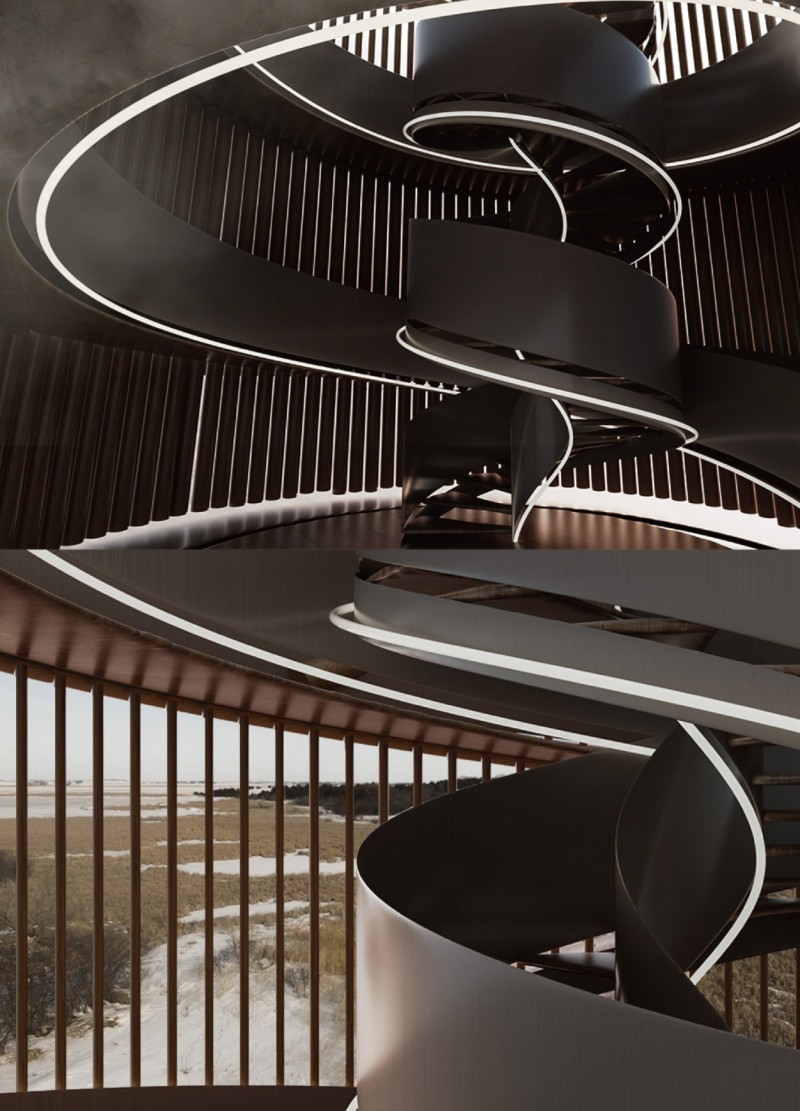5 key facts about this project
At its core, the project represents a fusion of innovation and tradition, intended to serve as a multifunctional space that caters to the needs of its users. The design revolves around a cohesive concept that promotes interaction among occupants, while also fostering a connection with the natural landscape. This is achieved through the effective use of spatial organization, creating an inviting atmosphere that encourages congregational activities, individual reflection, and communal engagement.
The architectural layout is characterized by distinct zones that allow for diverse activities within a cohesive framework. Public areas are designed to be accessible and inviting, while semi-private and private spaces offer a sense of tranquility. This thoughtful arrangement not only enhances the functional quality of the building but also ensures that every user can find their space within the larger context of the project. Natural light plays a crucial role in this design, with large windows and strategically placed openings allowing sunlight to filter through, enhancing the overall experience and connection to the outdoors.
Materiality is a fundamental aspect of this architectural project. The selection of materials reflects a commitment to sustainability while ensuring durability and aesthetic value. The use of concrete, glass, and wood provides a textural contrast that enhances visual interest and comfort. The choice of high-quality insulation materials contributes to energy efficiency, thereby reducing the environmental footprint. Carefully considered cladding materials not only serve a protective function but also contribute to the overall beauty of the facade.
Unique design approaches are manifest throughout the project, most notably in the innovative integration of technology and natural systems. Smart building technologies have been discreetly woven into the architecture, offering solutions that enhance user experience while promoting energy conservation. Features such as green roofs and rainwater harvesting systems are incorporated into the design, providing practical benefits while also reflecting an awareness of environmental responsibilities. These elements not only serve to reduce the building's ecological impact but also promote biodiversity within the urban landscape.
The project also pays homage to the local cultural context, with certain design elements inspired by regional architectural styles. By incorporating familiar motifs and materials, the project strengthens the relationship between the built environment and its cultural significance. This thoughtful reference to local heritage provides a sense of place, offering users a connection to the broader community.
Visual and spatial dynamics within the project further enhance its architectural identity. Characteristic shapes and lines create a rhythm that guides the visitor through the space, inviting exploration and discovery. The interplay of proportions and dimensions adds depth to the experience, encouraging a layered understanding of the architecture. Both the exterior and interior design are carefully linked, ensuring that the transition from surrounding landscape to enclosed spaces feels seamless and deliberate.
This architectural project exemplifies the notion that successful design transcends mere aesthetics; it is about creating meaningful spaces that enrich the lives of those who inhabit them. Its modern design approach, thoughtful materiality, and attention to functionality result in a building that not only meets practical needs but also elevates the standard for contemporary architecture.
For those interested in delving deeper into the intricacies of this edition of architectural design, exploring the architectural plans, sections, and diagrams will provide further insights into the innovative ideas that shaped this project. Each aspect invites contemplation, revealing the thoughtful considerations that underpin the architecture and emphasizing its relevance in today’s design landscape. Encountering the project through the detailed documentation can enhance appreciation for the seamless blend of creativity and functionality that defines this architectural achievement.


























